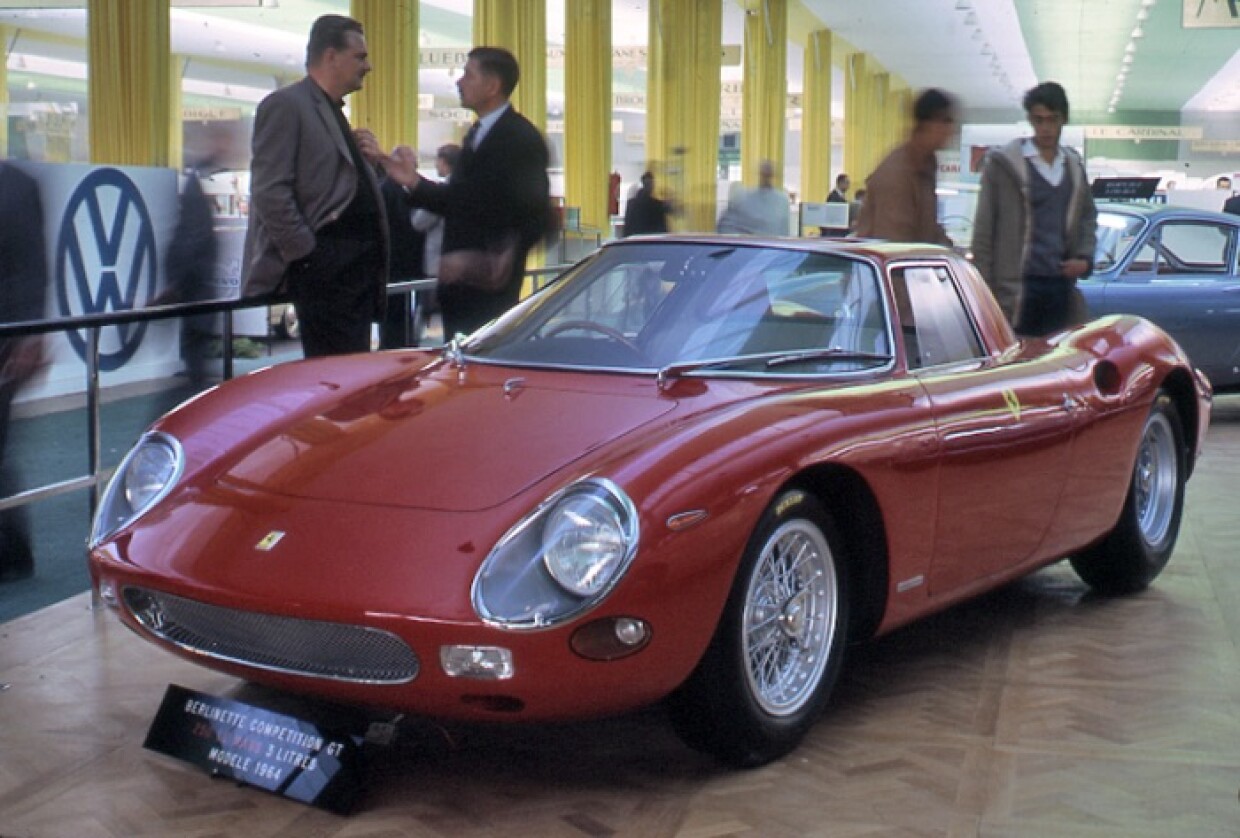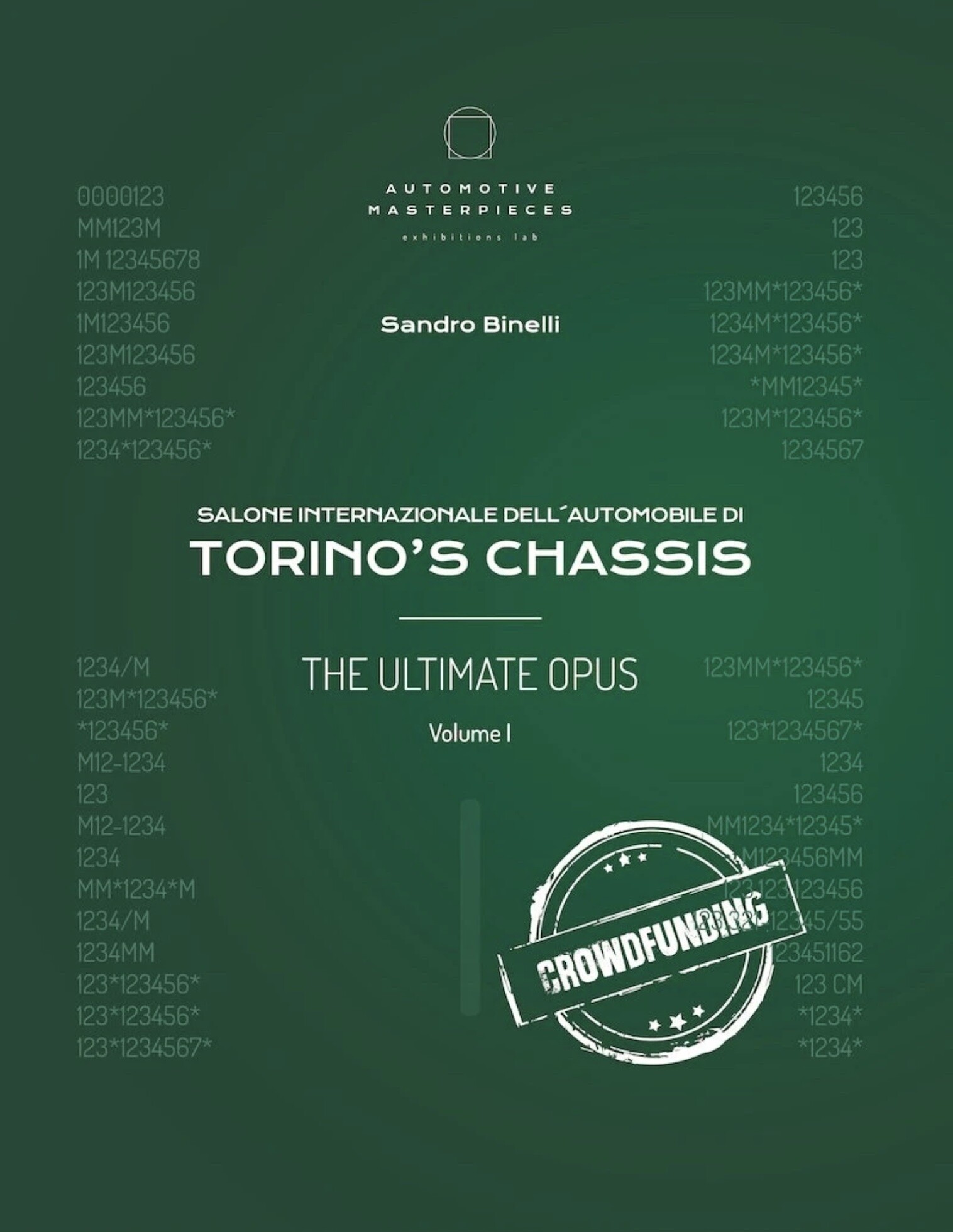
1963 Ferrari Berlinetta 250/Le Mans
ON/OFF
Why am I an Automotive Masterpiece?
L. Limited edition cars
no. 33 remaining, 1st built
The Ferrari 250 is a series of sports cars and “granturismo” built by Ferrari from 1952 to 1964. The company's most successful early line, the 250 series includes many variants designed for road use or sports car racing. 250 series cars are characterized by their use of an engine designed by Gioacchino Colombo, with the exception of the 250 Europa. This engine was the “Tipo 125” with a displacement of “just” 2953 cc, but it was light and powerful. The 250 series was replaced by the 275 and 330 series cars.
The Ferrari 250 GTO had a blazing career, but when it came to designing its successor, the technical team had a major evolution in mind. At that time, rear mid-engined cars were revolutionizing races, and the excellent results of the Dino's V6 and V8 units convinced Enzo Ferrari that the time had come to adopt this solution. From a dynamic point of view, this layout creates better weight distribution, and because the powerplant is positioned in front of the drive wheels, traction improves. The new model was planned to use a V8 unit, but in late '61, the renowned "Palace Riot" occurred, and the mass exit of the managers and technicians of the Racing Department caused huge turmoil. The development of the GTO successor underwent a drastic change, and it was decided to revert to the "old" twelve-cylinder unit designed by Gioacchino Colombo back in 1947; the task was to move this engine to the rear. New head Mario Forghieri and his team succeeded in fitting the V12 into the space behind the driver while maintaining balance and reliability. The new 250P, in 1963, was the first rear-engined car to win Le Mans and the Sportscar Championship itself, thanks to its significant advantage over Porsche. The technical staff decided then to "close" the 250P's cockpit and create a low, compact, and smooth coupé, giving birth to the 250/LM. Both cars shared the same lengthened Dino sports prototype (SP) chassis. It was formed by four tubes that carried oil and water to the front-mounted radiators. This helped maintain better weight balance but made both systems vulnerable to accident damage while also increasing the heat in the cockpit. Two 65-liter fuel tanks were located in front of the rear wheels to further balance the weight. For all V12-powered Ferraris, the model’s name was based on the displacement (in cubic centimeters) of one cylinder. All 250s shared the same Colombo DOHC architecture with 2,953 cc of displacement (250 cc per cylinder). The new racing Ferrari was dubbed the 250/LM, even if all units (except for the prototype) were fitted with the 3.3-liter (275 cc per cylinder) version so, by Ferrari convention, it should have been called the 275/LM. Pininfarina was entrusted with the bodywork and designed a lightweight skin to compete in GT championships. As usual Scaglietti put this design into reality. After Mike Parkes' test sessions, Ferrari and Pininfarina revealed the 250/LM at the 1963 Paris Motor Show. This time, the FIA decided not to homologate it in the GT class because such a radical car completely conformed to the connotations of a Sport (rear engine, Transaxle layout, new bodywork). In addition, it was necessary to build at least 100 units. The 250/LM was therefore assigned to the Prototype category. Throughout the '64 season, the berlinetta achieved many successes, including the 12 Hours of Reims and the 24 Hours of Le Mans. Enzo Ferrari tried again to homologate it as a GT for 1965, but the FIA denied this for a second time. This generated a limbo in which regulations required congruous production, but private drivers needed proof that it was a winning car, so it was necessary to be able to race in the GT class. The factory raced anyway the '65 season (NART won again at Le Mans) but not with the results of the GTO. It finally obtained homologation for 1966, but by then the 250/LM was no longer competitive. Total production reached 32 units.
The 250/LM with chassis no. *5149* was built by Ferrari, with the aim of promoting the LM model at the most important auto shows in Europe. In 1962, FIA regulations required a minimum production of 100 cars to compete in Group 3 GT in the World Sportscar Championship. Enzo Ferrari aimed to get homologation for the 250 LM, but things went differently. The prototype of the 250 LM was largely built by Pininfarina and featured differences compared to later units. Initially, it was equipped with a “type 210” engine with a 3 L displacement. The *5149*’s first appearance was during a press conference in September 1963 at Maranello, in the company’s courtyard, near the Shell gas pumps, Ferrari’s sponsor at the time. The location was later used for Shell advertising communications: the car appearing in front of the pumps in the ad was the *5149*. The prototype was first shown to the public on October 31, 1963, at the Paris Salon de l'Automobile. Presented as the successor to the 250 GTO, it was a sort of “closed version” of the 250 P. The *5149* chassis displayed had several updates from the Maranello press conference. One was the Pininfarina side badge prominently placed, since Pininfarina built most of the prototype, while production units were assembled by Scaglietti. After Paris, sn. *5149* was displayed in the same configuration at the Earls Court Motor Show in London. A few days later, the Salone dell'Auto di Torino was its first Italian event, in the same livery seen in Paris and London. In January 1964, it was exhibited at the Salon De L'automobile De Bruxelles and was purchased by N.A.R.T. (North American Racing Team), founded by Luigi Chinetti, whose idea was to promote the Ferrari brand in North America through intense racing participation. So, the car returned to the factory to be prepared for races. After the Sports Commission denied homologation in the GT class, the car was forced to compete among prototypes: it no longer made sense to keep the displacement within 3-liters, and it was upgraded with a “type 211” 3.3-liter engine; following traditional Ferrari nomenclature, it should have been renamed “275 LM,” but it continued to be called “250 LM.” The prototype was fine-tuned, and after testing session at the Modena Aerautodromo, with Mike Parkes driving, it was shipped to the US. In February 1964, *5149* participated in the American Challenge Cup Race at Daytona with several updates from its initial configuration. Driver Pedro Rodriguez, 5th on the starting grid, set an excellent practice time and a best race lap but, during the race, an oil leak and a fuel pipe failure forced a withdrawal. On March 1964, the *5149* participated in the SCCA Two 156 Mile Sports Car Races at Augusta in Georgia. Driver Butch Fulp finished 8th overall. The car appeared two weeks later on the Sebring starting grid, with other body updates compared to Daytona and Augusta. The 12 Hours of Sebring, in 1964, marked the beginning of the Ferrari - Shelby Cobra rivalry. After a fierce battle, the 250 LM, sn. *5149*, unfortunately, retired: the car caught fire during the 31st lap. The fire caused significant damage to the rear hood, engine bay, and interior, but the front remained intact. The car was returned to the factory, where it was repaired and converted into a road car. Significant modifications were made, making it more similar to the production version, with more refined finishes. Among the changes, the dual exhaust passing through the rear fascia, as originally, remained, attesting to the continuity of this example. In November 1964, the 250 LM received the homologation certificate from the C.S.A.I. Commission, according to FIA international regulations. The document listed the chassis number *5149* and engine *5149*/GT, valid from November 1964. The car was depicted in four photos: front ¾ view, rear ¾ view, engine bay, interior. These photos were likely taken during the September 1963 presentation in Maranello. Two lines stand out in the homologation document, crossed out and modified. The first line, Gran Turismo Category, clearly indicates that Ferrari was forced to resubmit it as a “National” Gran Turismo category. In the second, Ferrari changed the start of production from 1963 to 1964, presumably due to the dispute over its classification. On October 1966, the 250 LM received FIA homologation for Group 3 after numerous rejections, although it was already too late to use it.

